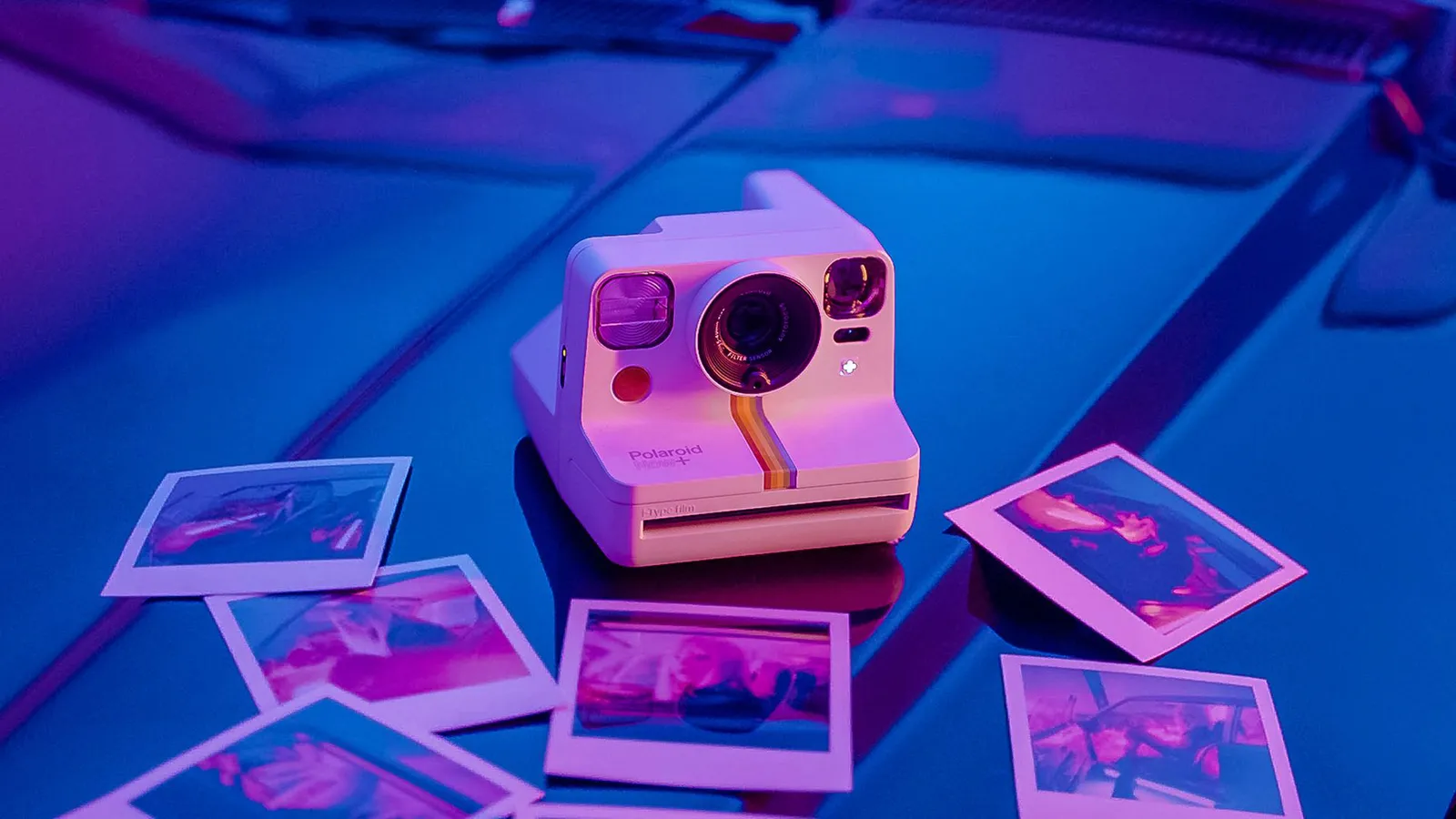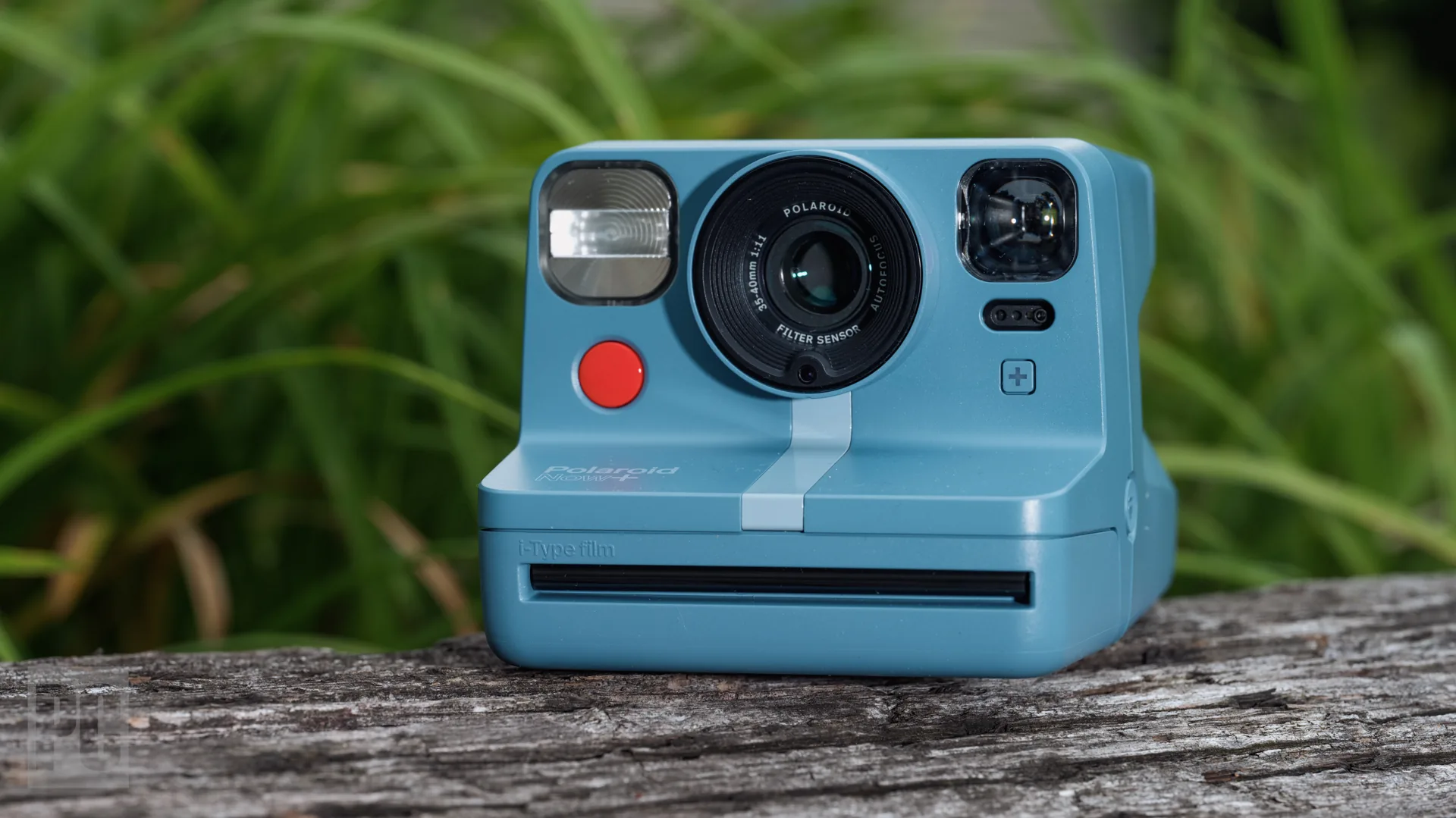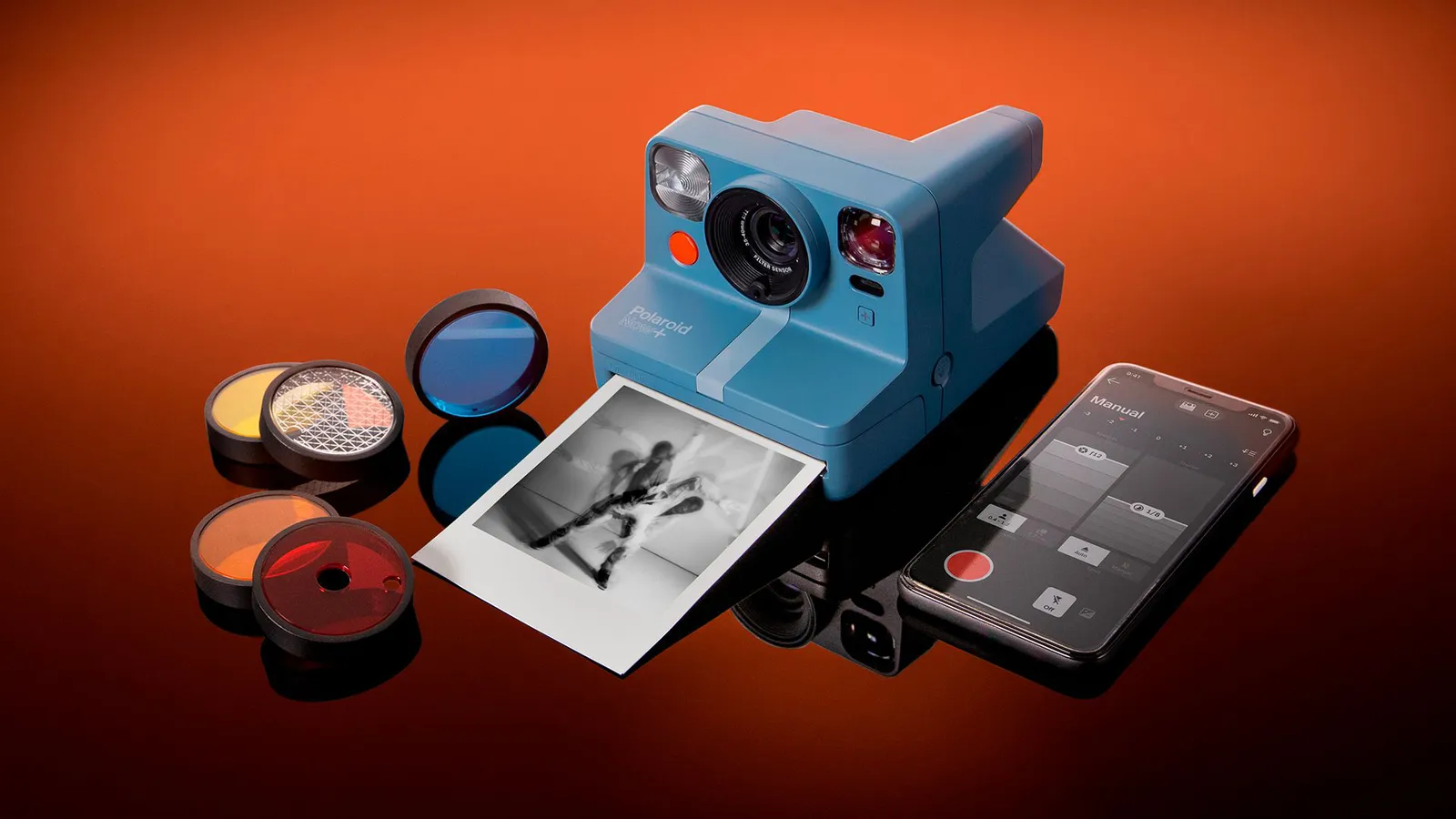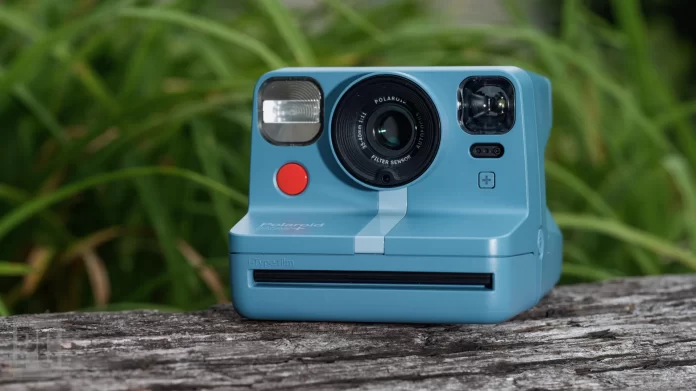Polaroid Now+ Review
INSTANT CAMERAS embody a delightful blend of vintage processes and modern methods, and the Polaroid Now+ proves how good it can feel when nostalgia gets an update. Even with a bunch of other instant cameras on the market, nothing quite beats the grainy charm of a classic, instant Polaroid snap.
The Now+ is available in white, black, or blue-grey. All three options are gorgeous, and at $150, it’s competitively priced with other instant cameras on the market. If you’re a photography nut and love to hold and look at tangible proof of your work, I think the investment is worthwhile.
Blast From the Past

Holding the Now+ in-hand is wonderful. It’s hefty and weighty, offering a sharp contrast to a smartphone or daintier counterparts like Instax cams. Once I attached the neck strap—an infuriating process that should, frankly, be abolished—the Now+ felt good resting against my torso. It might not be much in comparison to a professional’s gear, but there’s something unapologetically analog about toting around a 1-pound piece of tech.
The body has Polaroid’s typical chunky square design, with a large viewfinder and a few physical buttons. Other bells and whistles include a rechargeable battery, which is nice, although I’m disappointed to see Micro-USB still holding on by its fingernails. The box includes a little zippered pouch of snap-on colored lens filters, as well as a delightful ’70s-themed quick-start booklet.
The Now+ uses Polaroid’s cheaper, battery-free i-Type film. It is purchased separately; there’s a bundle available with some film packs that adds about $50 to the starter price. Film usually costs around $16 per pack from the manufacturer, so the bundle doesn’t really save you any money.
Shoot to Thrill

The Now+ has all of the features one would expect to find in an instant camera. You load up your film, press the button, and then wait patiently while trying to remember that Outkast gave you bad advice and you shouldn’t shake a developing photo. A few moments later, you ooh and ahh over the end result, holding a little slice of time in your palm.
What sets the Now+ apart from other instant cameras is how closely it hews to the world of manual photography. For example, instead of picking a filter in an app, you apply a real snap-on one. They added a neat experimental touch—I got some great results by combining different colored filters or using the starburst one to let light leak through. There are also on-camera buttons that allow you to set a custom shortcut or switch between intentional double exposures and a self-timer mode. Onboard digital indicators show you at a glance if you’re in one of these three modes.
The Now+ has a companion app; the brand says it’s optional, but it’s basically required. Alongside a bevy of others, there are two new-to-Polaroid modes inside the app—Tripod Mode, which makes use of the optional mount at the bottom of the camera body, and Aperture Priority, which lets you select an f-stop to control background focus and obtain moderate levels of bokeh. On paper, the smartphone app looked amazing. Unfortunately, in execution, it was a blight in my otherwise rosy viewfinder.
Best of Both Worlds—Almost

The Polaroid Originals smartphone app is bad. Theoretically, you can create neat photos without using the companion app, but if you avoid it, you miss out on some of its best features. I’m a mobile app expert. I love them, use them frequently, and am always downloading new ones. I think it’s fair to say that if someone like me can’t figure it out, the interface needs work.
After I paired my camera to my smartphone via Bluetooth, the app ate through an entire pack of i-Type film with reckless abandon. I tried to use the timer mode, pressed a button in an attempt to adjust it, and found out that it was actually a shutter button. I tried to make a sweet double exposure and accidentally took two photos without moving the camera. One $2 mistake followed another, followed another. There aren’t even any tutorials. The pleasant weight of the camera around my neck began to feel a little more like an albatross.
The camera’s manual mode allows you to use the physical shutter button, but you lose a lot of the coolest features. Juggling your phone and camera would be worth it for carefully composed shots, but one of the primary reasons to use an instant camera is to spontaneously capture a slice of time. If you’re struggling to use it when you want to take an impromptu selfie with a friend, the moment is lost. It negates the point of having an instant camera.
But overall, the Polaroid Now+ is a joy to use. It’s a definite step above both its predecessor and other similar models on the market. I hope Polaroid developers improve the app—if they do, this camera would be a no-brainer, since you’d be able to swap between orchestrated snaps and on-the-fly candids with ease.
If you can tolerate the bewildering interface enough to work around the app’s quirks, or you want your instant shots to look a certain way—spontaneity be darned—the camera is a worthy purchase for anyone looking to make vintage photos just a little more up-to-date.





